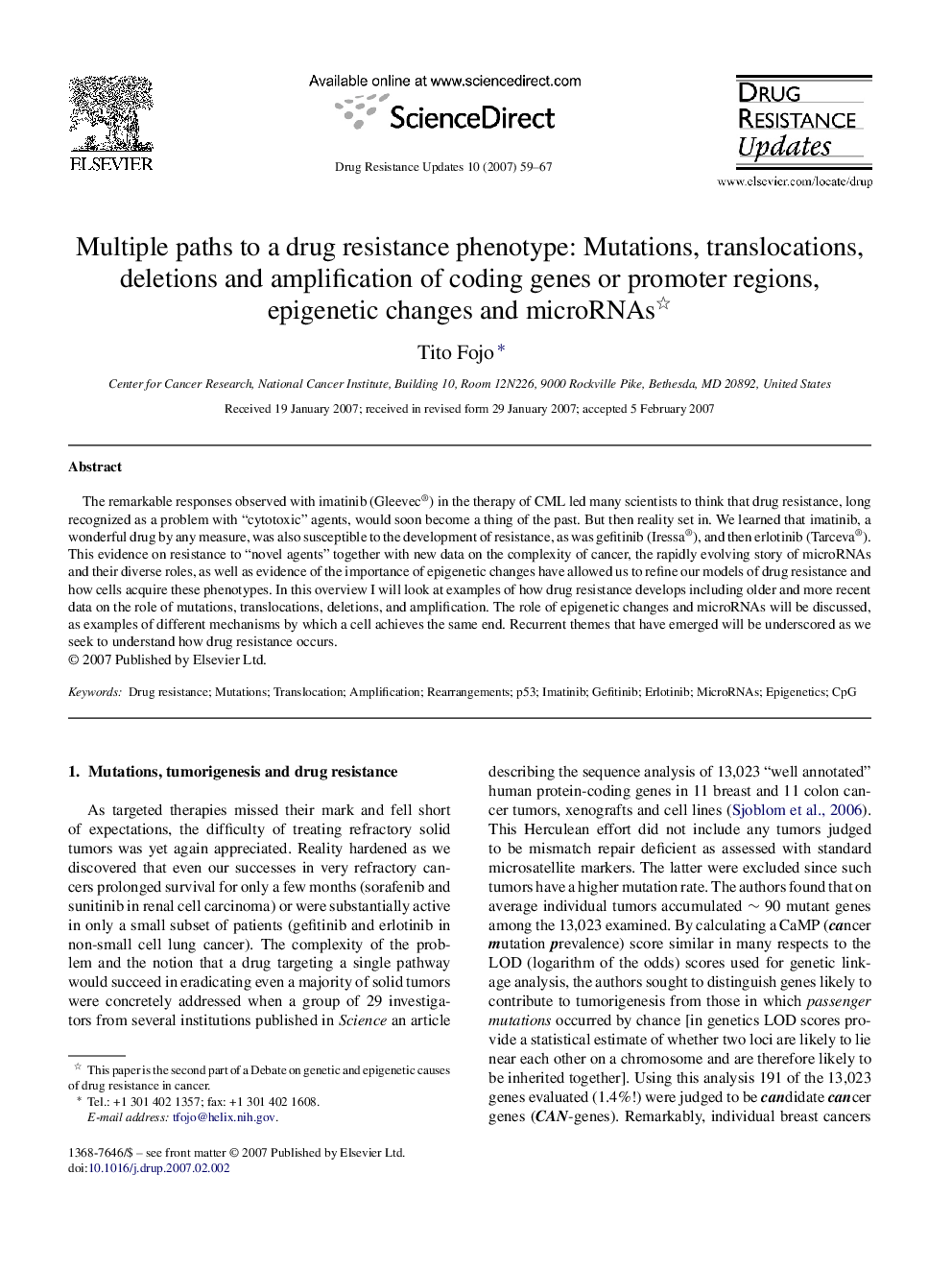| کد مقاله | کد نشریه | سال انتشار | مقاله انگلیسی | نسخه تمام متن |
|---|---|---|---|---|
| 2120583 | 1546860 | 2007 | 9 صفحه PDF | دانلود رایگان |

The remarkable responses observed with imatinib (Gleevec®) in the therapy of CML led many scientists to think that drug resistance, long recognized as a problem with “cytotoxic” agents, would soon become a thing of the past. But then reality set in. We learned that imatinib, a wonderful drug by any measure, was also susceptible to the development of resistance, as was gefitinib (Iressa®), and then erlotinib (Tarceva®). This evidence on resistance to “novel agents” together with new data on the complexity of cancer, the rapidly evolving story of microRNAs and their diverse roles, as well as evidence of the importance of epigenetic changes have allowed us to refine our models of drug resistance and how cells acquire these phenotypes. In this overview I will look at examples of how drug resistance develops including older and more recent data on the role of mutations, translocations, deletions, and amplification. The role of epigenetic changes and microRNAs will be discussed, as examples of different mechanisms by which a cell achieves the same end. Recurrent themes that have emerged will be underscored as we seek to understand how drug resistance occurs.
Journal: Drug Resistance Updates - Volume 10, Issues 1–2, February–April 2007, Pages 59–67